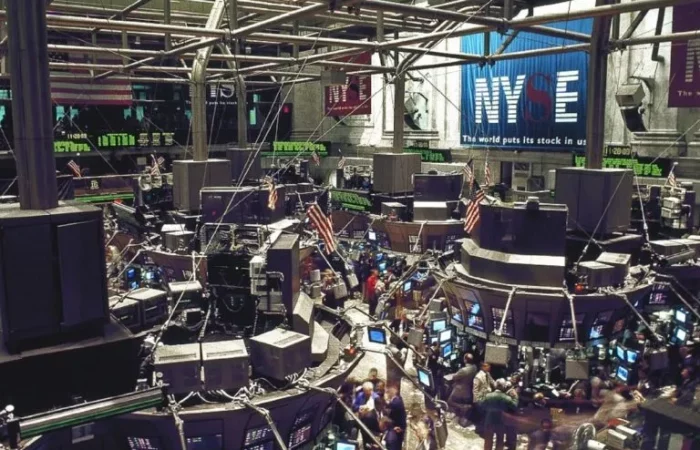The first quarter of 2020 started off well but didn’t end that way. At the beginning of the year, we expressed concerns over the level of market valuations, rising global debt levels, international trade disputes and their effect on supply chains and business planning as well as other geopolitical tensions. Admittedly, we did not factor in a sudden GLOBAL PANDEMIC!

THIRD QUARTER 2019 RETROSPECTIVE AND PROSPECTIVE
A Crepuscular Moment… But is it Dawn or Dusk?
“Bull markets do not die of old age; they die of excesses…”- Leon Cooperman
Economies are the cumulative reflection of the myriad of transactions taking place every day. In order for a transaction to take place, there must be a buyer and a seller. Both parties to the transaction believe that they are receiving adequate compensation, no matter on which side of the trade they reside. In financial markets, buyers and sellers are expressing differing expectations for the object being sold. Markets have continued to rise for a long period of time, indicative of there being more optimism that economic conditions will continue to improve. The question is: Will these expectations continue to be validated or will those positive expectations be overwhelmed by economic and geopolitical factors that have underpinned the rising markets to date? Are we at the dawn of a new era or the dusk of an era that has run its course?
In Canada, the S&P/TSX Total Return Index advanced 2.5% in the third quarter of 2019, bringing the year to date to 19.1%. The US market advanced 1.7% in the quarter as measured by the US dollar denominated S&P 500 Total Return Index. The S&P 400 MidCap Total Return Index lagged the 500 with a -0.1% return in this quarter. Markets represented by the MSCI EAFE Price Return index posted a negative 1.7% return as measured in US dollars or a -0.6% return in Canadian dollars. The Canadian dollar depreciated 1.1% to its US counterpart in Q3.
|
| |||||||||
|
|
|
Q4 |
YTD |
Q1 |
Q2 |
Q3 |
Q4 |
YTD | |
|
Toronto Stock Exchange |
13.3% |
2.6% |
2.5 % |
% |
19.1% | |||||
|
S&P 500 |
11.2% |
1.1 % |
2.9% |
% |
17.0% |
13.6% |
4.3% |
1.7 % |
% |
20.6% |
|
MSCI EAFE* |
6.7% |
0.5% |
-0.6 % |
% |
6.6% |
9.0% |
2.5% |
-1.7% |
% |
9.9% |
|
91 Day T-Bill |
0.4% |
0.4% |
0.4 % |
% |
1.2% | |||||
|
CUBI** |
3.9% |
2.5 % |
1.2% |
% |
7.8% | |||||
|
CDN/US dollar |
2.1% |
2.2% |
-1.1% |
% |
3.0% |
* Europe, Asia and Far East Index
** Canadian Universe Bond Index
A crepuscular event occurs twice a day. It refers to those moments in time between night and day: dawn and dusk.
It has been a decade since the great financial crisis. In that decade, stock markets have generally trended up as the global economies struggled to regain footing. In this slow, tepid recovery, central banks played a crucial role injecting liquidity into the markets through outright purchases of financial instruments and driving interest rates to unprecedented lows. In any recovery, excesses tend to accumulate in the shadow of the progress being accomplished only to become all too evident when the end of the cycle approaches.
Investors today should pause to consider: Are we at the dawn of a new era wherein the means to propel markets to higher levels will prevail, or, are we closer to the dusk of this business cycle?
Economies and markets are driven by productivity, the short-term debt/business cycle, the long-term debt cycle and the politics within and between countries. Regulators attempt to promote economic growth utilizing fiscal and monetary mechanisms as the economy swings through expansions and contractions. At this juncture, it would appear that we are nearer a period of contraction rather than expansion.
Global economic growth has been anaemic in the expansion since the financial crisis of 2008. US real per capita GDP has advanced at a rate of 1.5% during this period; the slowest rate of expansion over a decade since the 1950’s. The Us economy has done better since Mr. Trump took office, but the latest estimates are for slower growth going forward.
The OECD is forecasting slower global growth in GDP over the next few years. This outlook is consistent with global trends in manufacturing, transportation and warehousing; all of which have been impacted by trade disputes.
Central banks have been able to promote investment and spending by keeping interest rates low. Low rates have promoted massive debt accumulation over the past decade. The ability to promote growth through low rates has diminished as the growth in incomes and output are not keeping pace with the growth in debt servicing. Over US$17 trillion dollars of debt are now at negative interest rates, exacerbating negative real returns. Investors are no longer earning returns commensurate with risk which is most evident where yield curves are inverted.
The lack of yield in the fixed income markets has pushed investors to take on more risk. In the US, investors are heavily skewed towards equities. Margin debt relative to GDP is higher than it was before the last two market corrections. US equities are generally trading at a premium to the rest of the world as their economic fundamentals have been stronger.
The excesses of the last decade have highlighted the growing disparity between rich and poor resulting in conflict between capitalist adherents and socialist proponents. Geopolitical tensions are being strained as China’s economy challenges the US for supremacy.
Volatility in the global markets, particularly the bond markets, in the third quarter of 2019 would suggest that investors are losing confidence in the markets’ ability to maintain a positive direction. When and by what degree the markets may correct is anyone’s guess.
In this environment, we remain cautious.
The opinions expressed here are ours alone. They are provided for information purposes only and are not tailored to the needs of any particular individual or company, are not an endorsement, recommendation, or sponsorship of any entity or security, and do not constitute investment advice. We strongly recommend that you seek advice from a qualified investment advisor before making any investment decision.
We believe that investment management is about managing risk, not chasing speculative returns. Like to learn more? Please contact us here>>



